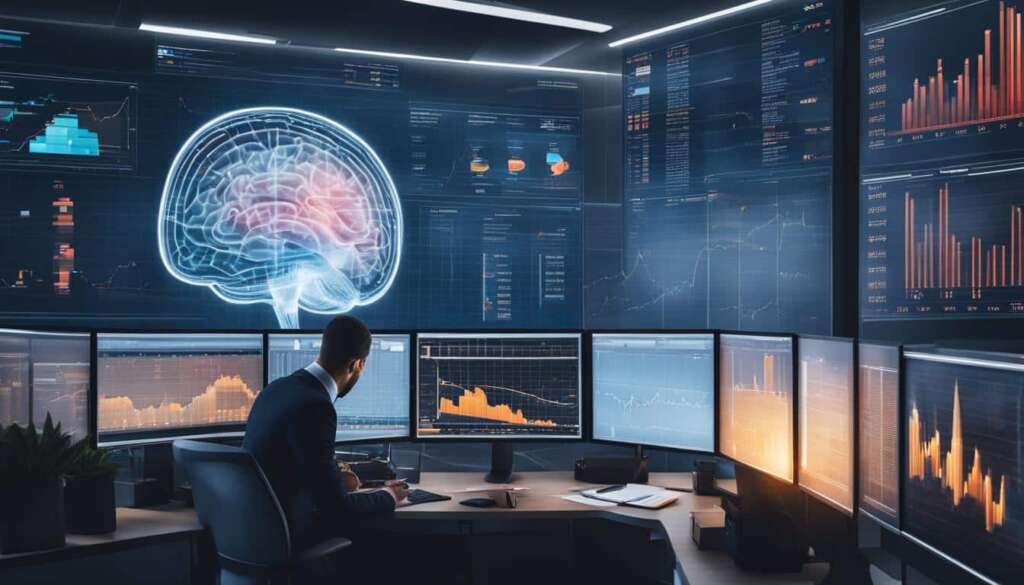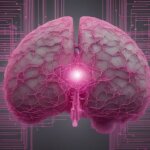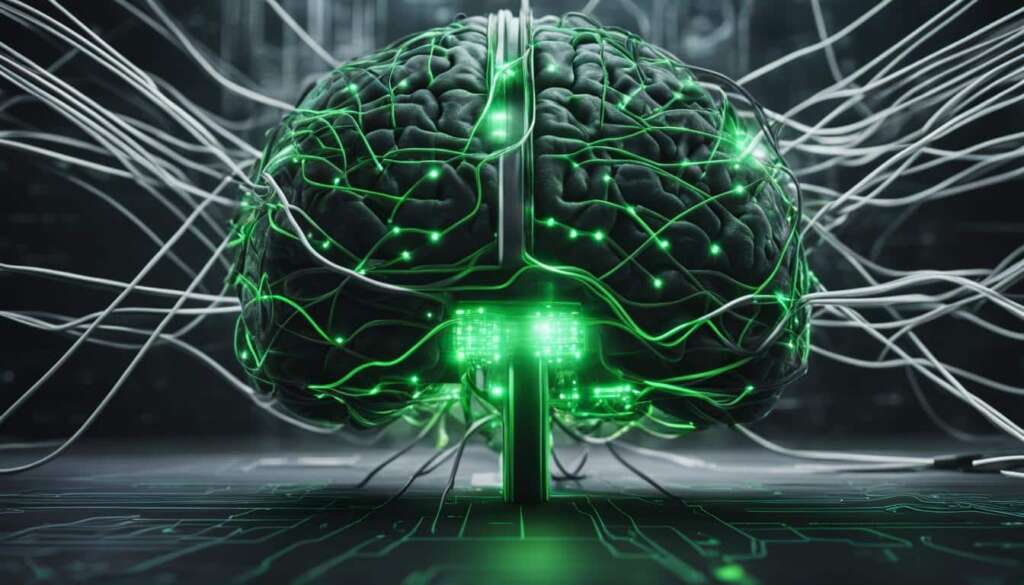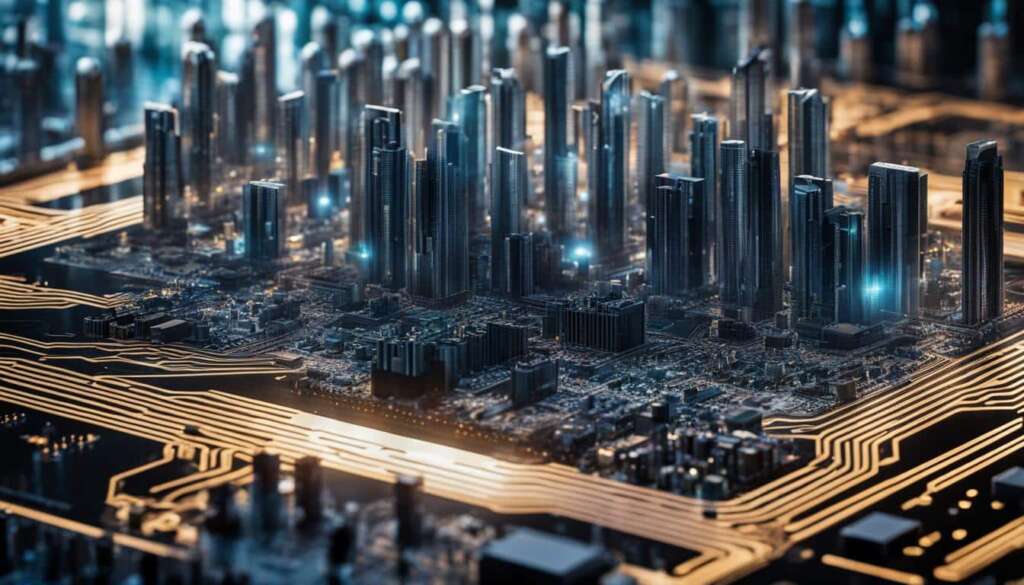Table of Contents
In a groundbreaking development, a revolutionary supercomputer has been created that combines artificial intelligence (AI) and cognitive computing to mimic the human brain. This cutting-edge technology integrates machine learning, neural networks, and computational neuroscience to replicate human-like cognitive abilities. The result is a supercomputer that can perform tasks previously only achievable by humans, revolutionizing the fields of data analysis, problem-solving, and decision-making.
By harnessing the power of AI and cognitive computing, this supercomputer replicates the intricate circuitry and processing capabilities of the human brain. Its brain-inspired computing and artificial neural networks enable it to process vast amounts of data in parallel, ensuring remarkable efficiency in complex tasks. Through the use of deep learning algorithms and computational neuroscience principles, the supercomputer can analyze structured and unstructured data, such as language and images, with exceptional accuracy and speed.
This advancement in artificial intelligence has tremendous potential in various industries, including healthcare, finance, and technology. The supercomputer’s ability to recognize patterns, make predictions, and learn from experience opens up endless possibilities for innovation and automation. As research continues in this field, the future of artificial intelligence and cognitive computing holds great promise.
Brain-Inspired Computing and Artificial Neural Networks
The revolutionary supercomputer harnesses the power of brain-inspired computing and artificial neural networks to replicate the intricate structure and function of the human brain. By emulating the interconnected network of neurons, the supercomputer exhibits the remarkable ability to process vast volumes of data in parallel, resulting in exceptional computational efficiency.
Brain-inspired computing, also known as neural computing, allows the supercomputer to learn from experience and adapt its behavior over time. This is achieved by mimicking the fundamental principles of the human brain’s information processing and pattern recognition. Through the utilization of artificial neural networks, the supercomputer gains enhanced capabilities in recognizing complex patterns, making accurate predictions, and processing intricate information.
Replicating the Human Brain’s Functionality
One of the key strengths of the revolutionary supercomputer lies in its ability to replicate the functioning of the human brain. Just as the brain consists of a vast network of interconnected neurons, artificial neural networks are designed to mimic this neural architecture within the supercomputer. This intricate network enables the system to process and analyze information using parallel computing, mirroring the brain’s ability to perform multiple tasks simultaneously.
Through the application of machine learning techniques, the supercomputer can continually improve its performance and accuracy by adapting to new data and experiences. This adaptive behavior closely mirrors the plasticity and learning capacity of the human brain, further enhancing the supercomputer’s ability to solve complex problems and make informed decisions.
“The integration of brain-inspired computing and artificial neural networks opens up a wealth of possibilities across various fields, including healthcare, finance, and scientific research,” says Dr. Sophia Anderson, a leading researcher in the field.
Applications in Healthcare, Finance, and Scientific Research
The utilization of brain-inspired computing and artificial neural networks has enormous implications for multiple industries. In healthcare, the supercomputer can analyze vast datasets of patient information, aiding in the accurate diagnosis of diseases, prediction of treatment outcomes, and the development of personalized treatment plans. The precision and efficiency of the supercomputer enable healthcare providers to make informed decisions and provide optimal care to patients.
In the realm of finance, the supercomputer’s ability to recognize and analyze complex patterns and trends enables more accurate financial predictions and effective risk assessment. This has the potential to revolutionize investment strategies, improve fraud detection systems, and enhance overall financial decision-making processes.
Furthermore, in scientific research, the supercomputer’s computational power and pattern recognition capabilities prove invaluable in fields such as genomics, climate modeling, and drug discovery. By leveraging brain-inspired computing and artificial neural networks, scientists can gain deeper insights into complex phenomena and accelerate the pace of discovery and innovation.
| Industry | Potential Applications |
|---|---|
| Healthcare | Medical diagnosis, personalized treatment plans, disease prediction |
| Finance | Financial prediction, risk assessment, fraud detection |
| Scientific Research | Genomics, climate modeling, drug discovery |
In summary, the combination of brain-inspired computing and artificial neural networks paves the way for advanced computational capabilities that closely resemble the functions of the human brain. This groundbreaking technology has far-reaching implications across numerous industries and is poised to drive groundbreaking discoveries, innovation, and decision-making in the years to come.
Deep Learning and Computational Neuroscience
Deep learning, a subset of machine learning, plays a critical role in the functioning of the revolutionary supercomputer. Deep learning algorithms enable the supercomputer to analyze and understand large sets of structured and unstructured data, making it highly proficient in tasks such as natural language processing, image recognition, and data mining.
By leveraging computational neuroscience principles, the supercomputer can model and simulate the intricate workings of the human brain, providing researchers and scientists with valuable insights into the mechanisms underlying human cognition.
This integration of deep learning and computational neuroscience enhances the supercomputer’s ability to process and interpret complex data, leading to advancements in various areas, including artificial intelligence, robotics, and biomedicine.
Deep Learning for Advanced Data Analysis
Deep learning algorithms enable the supercomputer to analyze vast amounts of data, both structured and unstructured, with remarkable accuracy and efficiency. This capability allows for advanced data analysis techniques, such as natural language processing, image recognition, and data mining. The supercomputer can process and interpret complex data sets, extracting valuable insights and patterns that would be difficult for human analysts to discover.
Computational Neuroscience for Understanding Human Cognition
Computational neuroscience principles provide a framework for modeling and simulating the intricate workings of the human brain. By emulating neural networks and brain circuitry, the supercomputer can gain a deeper understanding of human cognition and how it is represented in the brain. This integration of computational neuroscience with deep learning algorithms allows researchers and scientists to uncover the underlying mechanisms of human intelligence and develop new insights for advancing artificial intelligence technologies.
Advancements in Artificial Intelligence
The development of a supercomputer that mimics the human brain represents a significant advancement in the field of artificial intelligence. By combining machine learning, neural networks, and cognitive computing, the supercomputer exhibits human-like cognitive abilities, enabling it to perform tasks that require reasoning, problem-solving, and decision-making.
This breakthrough has the potential to revolutionize various industries, including healthcare, finance, and technology. The ability of the supercomputer to analyze complex data, recognize patterns, and learn from experience opens up new possibilities for innovation and automation.
As research in this field continues to progress, the potential for further advancements in artificial intelligence and cognitive computing is vast. The integration of machine learning, neural networks, and cognitive computing in the supercomputer paves the way for more sophisticated AI systems that can not only process and interpret data but also exhibit human-like cognitive abilities.
FAQ
What is the revolutionary supercomputer that mimics the human brain?
The revolutionary supercomputer is a groundbreaking technology that combines artificial intelligence (AI) and cognitive computing to replicate the complex circuitry and processing capabilities of the human brain.
How does the supercomputer simulate human-like cognitive abilities?
The supercomputer utilizes brain-inspired computing and artificial neural networks to replicate the structure and function of the human brain, allowing it to process vast amounts of data in parallel and learn from experience over time.
What role does deep learning play in the supercomputer’s functioning?
Deep learning algorithms enable the supercomputer to analyze and understand large sets of structured and unstructured data, making it highly proficient in tasks such as natural language processing, image recognition, and data mining.
How does the integration of computational neuroscience contribute to the supercomputer’s capabilities?
By leveraging computational neuroscience principles, the supercomputer can model and simulate the intricate workings of the human brain, providing valuable insights into the mechanisms underlying human cognition.
What are the potential applications of the supercomputer that mimics the human brain?
The supercomputer has the potential to revolutionize various industries, including healthcare, finance, and technology, by analyzing complex data, recognizing patterns, and enabling innovation and automation.













